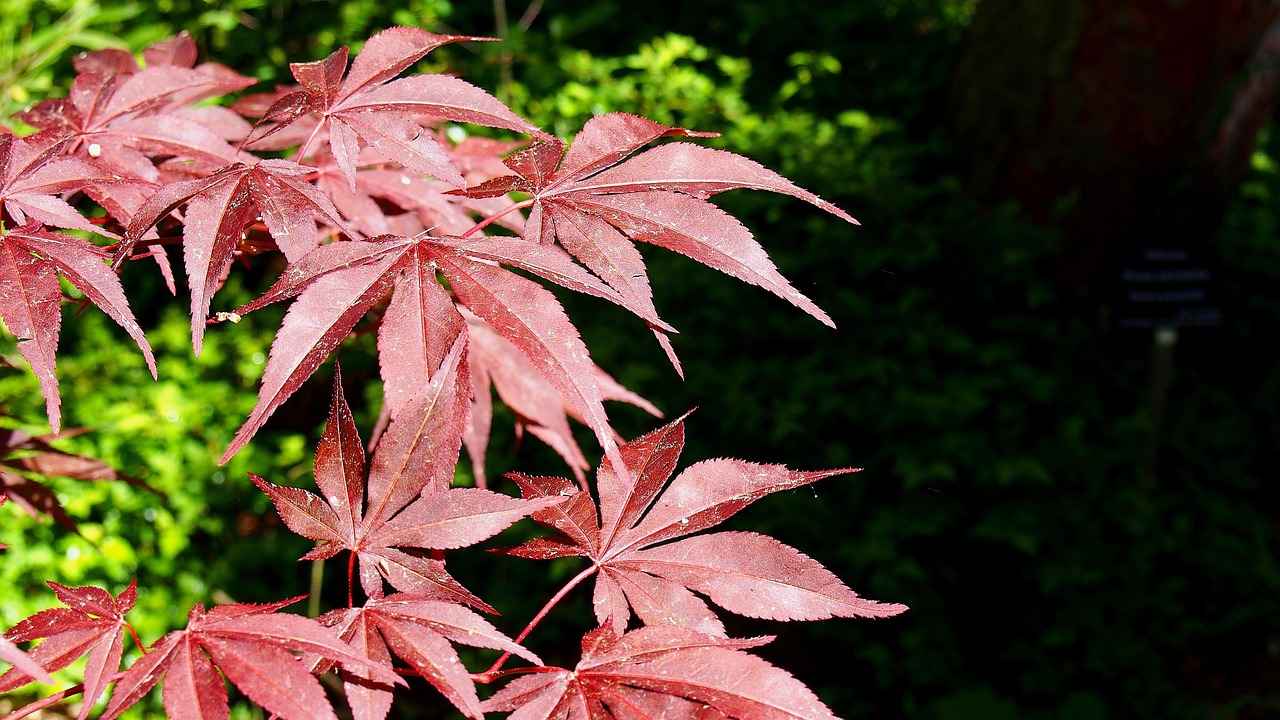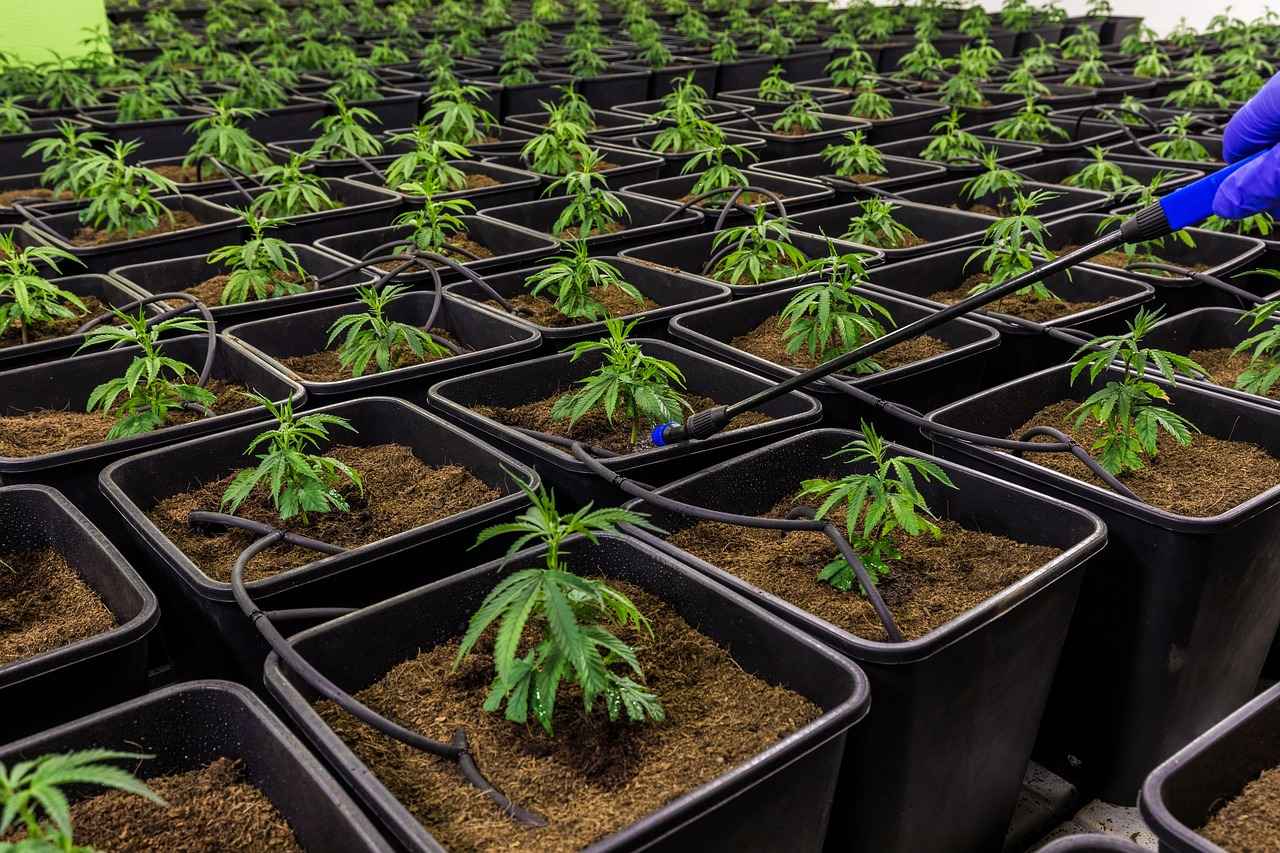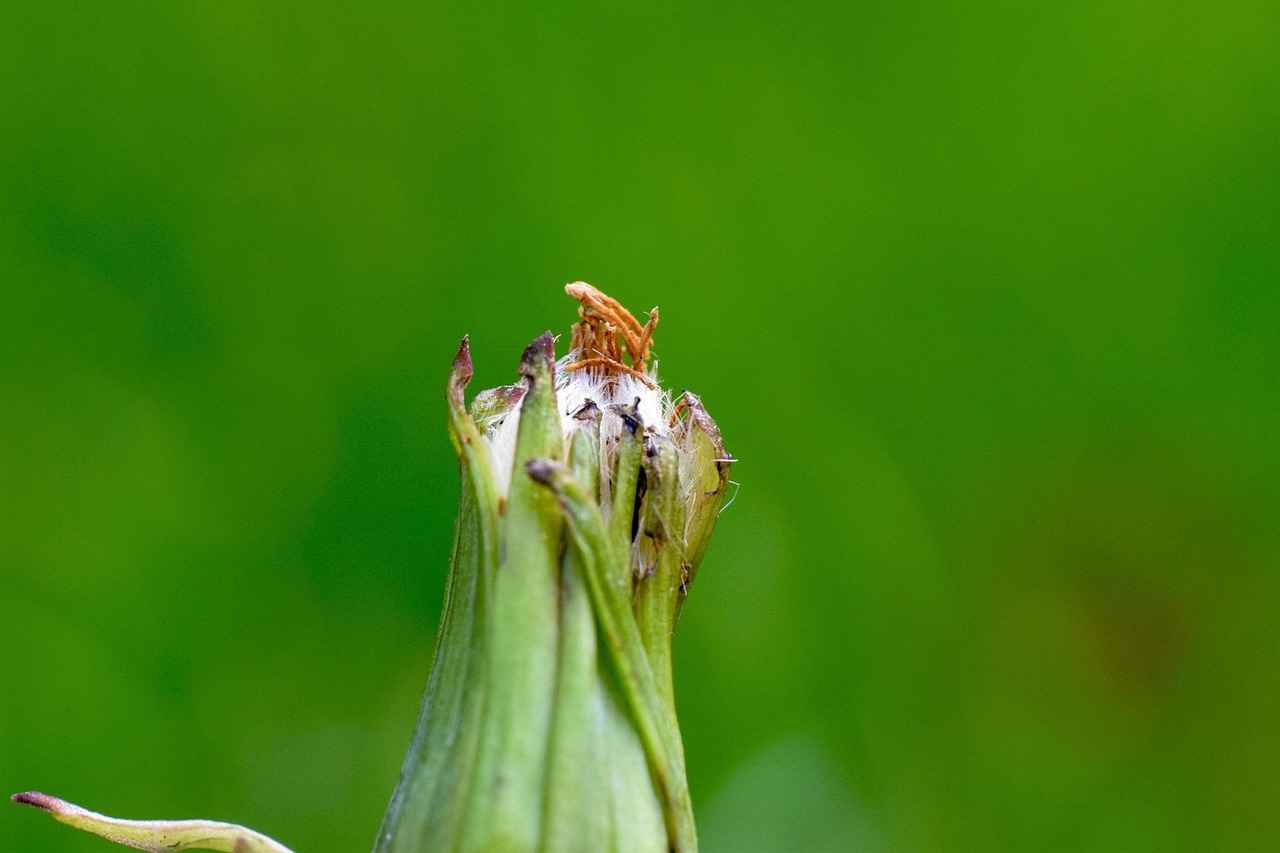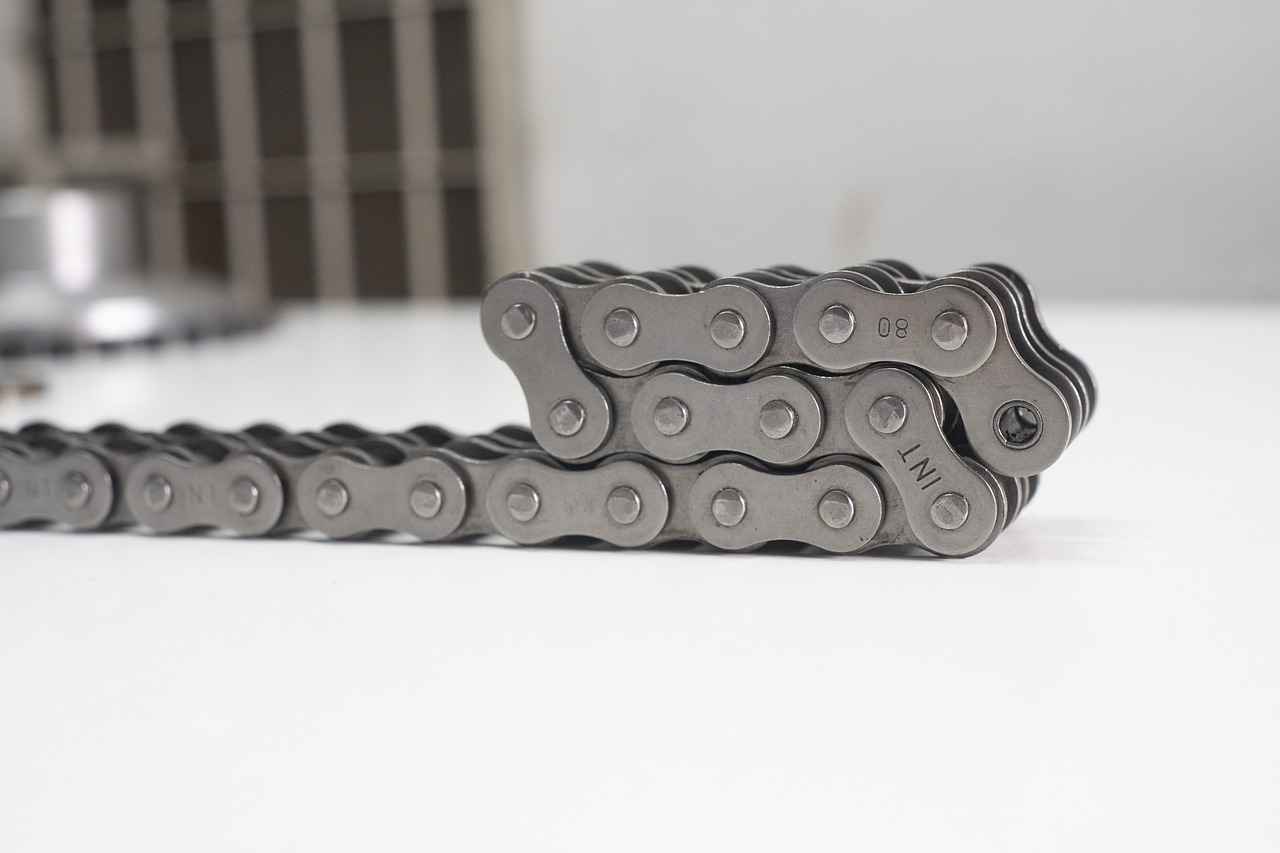This article provides a detailed overview of the process of planting weed clones, including best practices, tips for success, and common challenges to help growers achieve optimal results.
What Are Weed Clones?
Weed clones are cuttings taken from a mother plant that can grow into new, genetically identical plants. Understanding their characteristics is essential for successful cultivation. Cloning allows growers to replicate desirable traits, ensuring consistency in growth, flavor, and potency.
Why Choose Cloning Over Seeds?
Cloning offers several advantages over starting from seeds, including:
- Consistency in Genetics: Clones maintain the same genetic makeup as the mother plant, ensuring uniformity in growth and cannabinoid profiles.
- Faster Growth: Clones typically root faster than seeds germinate, leading to quicker harvest cycles.
- Preservation of Desirable Traits: Cloning allows growers to keep specific traits that are beneficial for their growing conditions.
The Benefits of Cloning
Cloning allows growers to maintain specific traits, ensuring uniformity in growth rates, cannabinoid profiles, and overall plant health. This method is particularly beneficial for commercial growers looking to optimize their yields.
Cost-Effectiveness of Cloning
Cloning can be more economical than purchasing seeds, as it reduces the need for trial and error associated with seed germination and selection.
Time Efficiency in Cloning
Clones often root faster than seeds germinate, allowing growers to shorten the time from planting to harvest, which can lead to increased yield per year.
Common Challenges with Cloning
While cloning can be advantageous, it also presents challenges such as disease transmission and the need for precise care during the rooting process. Growers must be vigilant to prevent potential issues.
How to Prepare for Cloning
Preparation is crucial for successful cloning. This includes:
- Selecting the Right Mother Plant: Choose a healthy, robust mother plant with desirable traits.
- Gathering Necessary Tools: Essential tools include sharp scissors, rooting hormone, and a suitable cloning medium.
- Creating an Optimal Environment: Ensure the environment is conducive to cloning by managing humidity, temperature, and light.
Steps to Successfully Plant Weed Clones
The process of planting weed clones involves several key steps:
- Taking Cuttings: Cut at a 45-degree angle to maximize surface area for rooting.
- Rooting Hormone Application: Use rooting hormone to enhance root development.
Creating the Ideal Environment for Clones
Clones require specific environmental conditions to thrive:
- Humidity and Temperature Control: High humidity and stable temperatures are vital for reducing stress.
- Lighting Conditions: Use fluorescent or LED lights to provide adequate light without overwhelming the clones.
Monitoring and Caring for Your Clones
Once planted, ongoing care is vital for the health of your clones. Regular monitoring and adjustments can prevent issues and promote growth. Pay attention to:
- Watering Techniques: Find a balance between overwatering and underwatering to keep the medium moist.
- Identifying and Addressing Problems: Look for signs of stress, such as yellowing leaves or wilting, to address issues early.
Transplanting Your Clones
Once your clones have developed a robust root system, it’s time to transplant them into larger pots or outdoor gardens:
- When to Transplant: Wait until the roots are well established and visible to prevent shock.
- Best Practices for Transplanting: Handle clones by the root ball to minimize stress during the transition.

What Are Weed Clones?
Weed clones are essentially cuttings taken from a healthy mother plant, designed to grow into new, genetically identical plants. This process of cloning is a popular method among cannabis cultivators, as it allows them to replicate the desirable traits of the original plant. Understanding the characteristics of weed clones is essential for successful cultivation, and it can significantly enhance the grower’s overall experience.
Unlike seeds, which can exhibit genetic variability, clones offer a consistent genetic profile. This means that growers can expect uniformity in growth rates, cannabinoid profiles, and overall plant health. For those looking to cultivate cannabis for medicinal or recreational purposes, this consistency can be a significant advantage.
Benefits of Using Weed Clones
- Genetic Consistency: Clones maintain the same genetic makeup as the mother plant, ensuring that the desired traits are preserved.
- Faster Growth: Clones typically root faster than seeds germinate, allowing for quicker turnaround times from planting to harvest.
- Preservation of Desirable Traits: Growers can select mother plants with specific characteristics, such as flavor, potency, or resistance to pests, and replicate them through cloning.
Additionally, cloning can be a more cost-effective method compared to purchasing seeds. The initial investment in a quality mother plant can yield multiple clones, reducing the need for trial and error associated with seed germination.
Common Challenges with Weed Clones
While cloning offers numerous benefits, it is not without its challenges. One of the primary concerns is the risk of disease transmission. If the mother plant is infected with a disease, the clones will inherit these issues. Moreover, the rooting process requires precise care; clones are particularly vulnerable during this phase. Factors such as humidity, temperature, and light exposure must be carefully managed to ensure successful rooting.
In summary, weed clones are a valuable tool for cannabis cultivators, providing a reliable way to replicate desirable plant traits. By understanding the benefits and challenges of cloning, growers can make informed decisions that lead to successful and fruitful cultivation.

Why Choose Cloning Over Seeds?
When it comes to cultivating cannabis, many growers are faced with the decision of whether to start from seeds or to utilize cloning techniques. While both methods have their merits, cloning presents several distinct advantages that can significantly enhance the cultivation process.
One of the primary benefits of cloning is genetic consistency. Unlike seeds, which can exhibit genetic variation leading to differences in growth rates, cannabinoid profiles, and overall plant health, clones are genetically identical to their mother plant. This ensures that every plant will exhibit the same desirable traits, making it easier for growers to predict outcomes and maintain quality across their crops.
Additionally, cloning offers a faster growth cycle. Clones typically root more quickly than seeds germinate, allowing growers to reduce the time between planting and harvest. This rapid growth can lead to increased yields within a given timeframe, making cloning a particularly appealing option for commercial growers who are looking to maximize their production efficiency.
Another significant advantage of cloning is the ability to preserve desirable traits. Growers can select a mother plant with specific characteristics—such as high THC levels, disease resistance, or robust growth—and create multiple clones that retain these traits. This capability is crucial for maintaining a consistent product, especially in markets where quality and potency are paramount.
Furthermore, cloning can be more cost-effective than purchasing seeds. By utilizing clones, growers can avoid the expenses associated with seed germination failures and the time-consuming process of selecting the best plants from a batch of seeds. This not only saves money but also streamlines the cultivation process, allowing for a more efficient use of resources.
Despite the numerous advantages, cloning does come with its own set of challenges. Growers must be vigilant about disease transmission, as clones taken from a mother plant can carry pathogens. Proper hygiene and care during the cloning process are essential to mitigate these risks. Additionally, clones require specific environmental conditions to thrive, including appropriate humidity, temperature, and light levels, which can necessitate additional monitoring and adjustments.
In summary, the decision to choose cloning over seeds is backed by several compelling reasons: genetic consistency, faster growth, preservation of desirable traits, and cost-effectiveness. By understanding these advantages, growers can make informed choices that enhance their cultivation practices and lead to more successful harvests.
The Benefits of Cloning
When it comes to cannabis cultivation, cloning stands out as a highly effective method for growers aiming to achieve consistency and quality in their crops. This technique enables cultivators to replicate a mother plant‘s specific traits, ensuring that each new plant exhibits the same desirable characteristics. The benefits of cloning extend beyond mere genetic consistency; they encompass a range of advantages that can significantly impact both small-scale and commercial operations.
One of the primary advantages of cloning is the ability to maintain uniformity in growth rates and overall plant health. By producing genetically identical plants, growers can expect similar responses to environmental conditions, nutrient levels, and care routines. This predictability is particularly beneficial for commercial growers who rely on consistent yields to meet market demands.
- Enhanced Cannabinoid Profiles: Cloning allows growers to preserve specific cannabinoid and terpene profiles that are highly sought after by consumers. This ensures that the end product meets the desired quality standards.
- Reduced Variability: Unlike seeds, which can produce a wide range of phenotypes, clones eliminate the variability associated with seed germination. This means that growers can plan their cultivation cycle with greater accuracy.
- Faster Growth Cycles: Clones typically root faster than seeds germinate, allowing for a quicker turnaround from planting to harvest. This time efficiency can lead to increased yields per growing season.
Furthermore, cloning can be a cost-effective method for growers. Purchasing seeds often involves considerable expense, especially if trial and error is needed to find the right genetics. In contrast, cloning eliminates this uncertainty, allowing growers to focus on optimizing their existing plants. This economic aspect is particularly appealing to commercial operations, where every dollar counts.
Another significant benefit of cloning is the ability to rapidly scale operations. As growers identify high-performing plants, they can quickly produce more clones to expand their cultivation area without the lengthy process of growing from seed. This scalability is crucial for businesses looking to increase their market presence efficiently.
However, while cloning offers numerous benefits, it is essential to acknowledge the potential challenges. For instance, if a mother plant is affected by disease or pests, all clones derived from it will carry those issues. Therefore, maintaining a healthy mother plant is paramount for successful cloning. Additionally, precise care during the rooting process is necessary to ensure that clones establish robust root systems.
In summary, cloning presents a myriad of benefits that make it an attractive option for cannabis growers. From ensuring genetic consistency and enhancing cannabinoid profiles to offering cost savings and scalability, the advantages of cloning cannot be overstated. By understanding and leveraging these benefits, growers can enhance their cultivation practices and achieve optimal results.
Cost-Effectiveness of Cloning
When considering the cultivation of cannabis, one of the most significant decisions a grower faces is whether to start from seeds or to utilize cloning techniques. While both methods have their advantages, the stands out as a compelling reason to choose this route. Cloning can be more economical than purchasing seeds, as it reduces the need for trial and error associated with seed germination and selection.
One of the primary benefits of cloning is the elimination of the uncertainty that often accompanies growing from seeds. When starting from seeds, growers frequently encounter issues such as poor germination rates and genetic variability. These factors can lead to wasted time and resources, as not all seeds will produce viable plants. In contrast, clones are genetically identical to the mother plant, ensuring that each cutting has the same potential for success.
Additionally, the cost of seeds can add up quickly, especially for growers looking to cultivate multiple plants. By opting for cloning, growers can create numerous clones from a single mother plant, significantly reducing their overall expenses. This is particularly advantageous for commercial growers who aim to maximize their profit margins while minimizing costs.
Furthermore, cloning allows for the preservation of desirable traits. When a grower identifies a mother plant with exceptional characteristics—such as high yield, potent cannabinoid profiles, or disease resistance—they can replicate these traits through cloning. This means that growers can consistently produce high-quality plants without the uncertainty of seed variability.
Moreover, the time efficiency associated with cloning cannot be overlooked. Clones typically root faster than seeds germinate, allowing growers to transition from planting to harvesting in a shorter time frame. This efficiency can lead to increased yields per year, further enhancing the economic benefits of cloning.
In summary, the cost-effectiveness of cloning is evident in several key areas: reduced uncertainty, lower expenses, preservation of traits, and improved time efficiency. As growers seek to optimize their cultivation strategies, understanding the financial advantages of cloning can lead to more informed decisions and ultimately, greater success in their cannabis endeavors.
Time Efficiency in Cloning
In the world of cannabis cultivation, time efficiency is a critical factor that can significantly impact overall yield and profitability. One of the most compelling advantages of using clones instead of seeds is the reduced time frame from planting to harvest. This efficiency is particularly beneficial for growers looking to maximize their output within a limited growing season.
When growers utilize clones, they are essentially bypassing the germination stage that seeds must undergo. Seeds can take anywhere from a few days to a couple of weeks to germinate, while clones, which are cuttings taken from a mother plant, often root within 7 to 14 days. This means that growers can see new growth much sooner, allowing for a quicker transition into the vegetative stage of growth.
Moreover, the ability to produce genetically identical plants ensures that all clones exhibit similar growth patterns and characteristics. This uniformity not only simplifies the management process but also allows for more predictable timing in the cultivation cycle. As a result, growers can plan their harvests more accurately, aligning them with market demands and maximizing profitability.
Another aspect of time efficiency in cloning is the ability to maximize yield. With faster rooting times, growers can potentially achieve multiple harvests within a single year. This is especially advantageous in regions with shorter growing seasons, where every day counts. By reducing the time it takes for plants to establish themselves, growers can effectively increase their annual yield, translating to higher returns on investment.
Additionally, the process of cloning eliminates the uncertainty associated with seed germination rates. When starting from seeds, growers often face challenges such as inconsistent germination rates and the need to cull weak or undesirable plants. Cloning allows them to focus on strong, healthy plants that have already proven their viability, thus streamlining the entire cultivation process.
However, it’s important to note that while cloning offers significant time advantages, it also requires careful management to ensure success. Growers must provide optimal conditions for rooting, including adequate humidity, temperature control, and proper lighting. Failure to create the right environment can lead to slower rooting times or even plant loss, which could negate the time savings gained from using clones.
In summary, the time efficiency offered by cloning as opposed to seed germination is a game-changer for cannabis cultivators. By enabling faster rooting times and the ability to produce multiple harvests within a year, cloning not only enhances productivity but also aligns closely with the demands of the market. For growers looking to optimize their operations and maximize their yields, understanding and implementing effective cloning techniques is essential.
Common Challenges with Cloning
Cloning cannabis plants is a popular method among growers for its numerous advantages, including genetic consistency and faster growth rates. However, as with any cultivation technique, it comes with its own set of challenges that can hinder success if not properly managed. Understanding these challenges is crucial for any grower looking to optimize their cloning process.
One significant challenge of cloning is the risk of disease transmission. When taking cuttings from a mother plant, there is a potential for pathogens to be transferred to the clones. This can result in stunted growth, poor yields, or even the death of the new plants. To mitigate this risk, it is essential to ensure that the mother plant is healthy and free from diseases. Regular inspection and proper sanitation practices can help prevent the introduction of pathogens during the cloning process.
Another critical aspect to consider is the need for precise care during the rooting process. Clones require specific environmental conditions to thrive, including adequate humidity, temperature, and light. Failure to provide these optimal conditions can lead to poor root development or even clone failure. For instance, if the humidity is too low, clones may dry out before they can establish roots. Conversely, excessive humidity can foster mold growth, which is detrimental to young plants.
Moreover, the rooting medium also plays a vital role in the cloning process. Different mediums, such as rock wool, soil, or hydroponic solutions, have varying properties that affect moisture retention and aeration. Choosing the wrong medium can lead to overwatering or underwatering, both of which can severely impact the health of the clones. Growers should experiment with different mediums to find the one that best suits their specific environment and cloning method.
Monitoring the clones closely is essential for early problem detection. Signs of stress, such as yellowing leaves or wilting, can indicate that the clones are not receiving the care they need. Being proactive in addressing these issues can save a crop from potential failure. Implementing a regular monitoring schedule and keeping a growth journal can help growers track changes and adjust care as needed.
Lastly, the transition from cloning to transplanting can be a challenging phase. Clones that have developed roots must be handled delicately to avoid root damage during the move to larger pots or outdoor gardens. Timing is also crucial; waiting too long to transplant can lead to root binding, while transplanting too early can shock the plants. Growers should look for visible signs of root development before making the transition.
In summary, while cloning offers many benefits, it is essential to be aware of the challenges involved. By understanding disease transmission risks, providing precise care during rooting, selecting the appropriate medium, monitoring clones closely, and handling the transplanting process with care, growers can significantly improve their chances of success in cultivating healthy cannabis plants from clones.

How to Prepare for Cloning
Preparation is crucial for successful cloning. The initial steps you take can significantly impact the health and viability of your clones. This process involves several key components: selecting the right mother plant, gathering necessary tools, and creating an optimal environment for the clones to thrive.
Choosing the Right Mother Plant
The mother plant serves as the genetic source for your clones, making its selection one of the most important steps in the cloning process. Look for a mother plant that is healthy, vigorous, and exhibits the desired traits you wish to replicate. Avoid plants that show signs of stress, disease, or pest infestations. A strong mother plant will yield clones that are more resilient and capable of thriving in their new environment.
Essential Tools for Cloning
Gathering the right tools is essential for a smooth cloning process. Here’s a list of the basic tools you will need:
- Sharp Scissors or a Razor Blade: To make clean cuts on the plant.
- Rooting Hormone: This helps to promote root development.
- Cloning Medium: Options include rock wool, peat pellets, or cloning cubes.
- Humidity Dome: To maintain moisture levels during the initial rooting phase.
- Light Source: LED or fluorescent lights to provide adequate light without overwhelming the clones.
Creating an Optimal Environment
Once you have selected your mother plant and gathered your tools, the next step is to create an optimal environment for your clones. Clones require specific conditions to root successfully:
- Humidity: High humidity levels (around 70-80%) are essential for preventing moisture loss from the cuttings.
- Temperature: A stable temperature between 70-75°F (21-24°C) encourages healthy growth.
- Light: Provide indirect light for 18-24 hours a day to stimulate growth without causing stress.
Using a humidity dome can help maintain moisture levels, while a thermometer and hygrometer can assist in monitoring the temperature and humidity. Adjustments may be necessary based on the specific needs of your clones.
Prepping the Clones
Before taking cuttings, ensure that all tools are clean to minimize the risk of infection. When taking cuttings, choose healthy stems that are at least 4-6 inches long. Make a cut at a 45-degree angle to maximize surface area for rooting. After taking the cuttings, dip the cut end in rooting hormone before placing them into your cloning medium.
In summary, thorough preparation is key to successful cloning. By selecting a robust mother plant, gathering essential tools, and creating an optimal environment, you set the stage for healthy, thriving clones. This foundational work not only enhances the chances of successful rooting but also contributes to the overall health and productivity of your cannabis garden.
Choosing the Right Mother Plant
Choosing the right mother plant is a crucial step in the cloning process, as it directly impacts the quality and success of your clones. A healthy and robust mother plant serves as the foundation for producing genetically identical cuttings that will thrive in their new environment. Here, we will delve into the key factors to consider when selecting your mother plant, ensuring that your cloning efforts yield the best possible results.
- Desirable Traits: Look for mother plants that exhibit desirable characteristics such as vigorous growth, high yield, and strong resistance to pests and diseases. These traits will be passed on to the clones, ensuring that they inherit the best qualities of the mother.
- Stress-Free Plants: Avoid plants that show any signs of stress or disease. Indicators of stress may include yellowing leaves, wilting, or stunted growth. A stressed plant is less likely to produce healthy clones, as it may have compromised genetics or weakened vitality.
- Age and Size: Ideally, choose a mother plant that is mature but not too old. A plant that is around 3-6 months old is often at its peak in terms of health and vitality. Additionally, a larger plant can provide more cuttings, maximizing your cloning potential.
- Genetic Stability: Select a mother plant that has consistently produced high-quality clones in the past. This genetic stability is crucial for maintaining the desired traits across multiple generations of plants.
In addition to these factors, it is essential to maintain proper care for your mother plant. This includes providing adequate nutrients, water, and light, as well as monitoring for any signs of disease. A well-cared-for mother plant will not only produce healthy clones but will also continue to thrive, allowing for ongoing cloning opportunities.
Lastly, consider the environment in which the mother plant is grown. A stable and controlled environment can significantly affect the plant’s health. Factors such as temperature, humidity, and light conditions should be optimized to promote robust growth.
By carefully selecting a mother plant with the right traits and providing it with optimal care, you set the stage for successful cloning. This foundational step will ensure that your clones are strong, healthy, and capable of thriving in their new homes, ultimately leading to a more productive growing experience.
Essential Tools for Cloning
When embarking on the journey of cloning cannabis plants, having the right tools at your disposal is crucial. The cloning process can be intricate, but with the proper equipment, you can enhance your chances of success significantly. Here’s a closer look at the essential tools you’ll need to streamline the cloning process.
- Sharp Scissors or Pruning Shears: Precision is key when taking cuttings from the mother plant. A pair of sharp scissors or pruning shears will ensure clean cuts, minimizing damage to the plant and reducing the risk of infection.
- Rooting Hormone: This is a vital component in the cloning process. Rooting hormones contain auxins, which promote root development. Applying this substance to the cut end of your clone can significantly increase the likelihood of successful rooting.
- Cloning Medium: The medium serves as the foundation for your clones. Options include rock wool, peat pellets, or even a hydroponic setup. Each medium has its unique properties, so choose one that best fits your growing conditions and preferences.
- Humidity Dome: Maintaining high humidity levels is essential for clones, especially in their early stages. A humidity dome helps create a microenvironment that retains moisture, reducing stress on the cuttings and encouraging faster root growth.
- pH Meter: Monitoring the pH level of your cloning medium is vital for ensuring nutrient availability. A pH meter will help you maintain the optimal range, typically between 5.5 and 6.5, which is crucial for healthy root development.
- Grow Lights: While clones do not need as much light as mature plants, they still require adequate lighting to photosynthesize. Using fluorescent or LED grow lights can provide the necessary light without overwhelming the young plants.
- Watering Can or Spray Bottle: Proper watering techniques are crucial during the cloning process. A watering can with a fine spout or a spray bottle can help you deliver moisture gently and evenly, preventing overwatering and root rot.
By gathering these essential tools, you can create a conducive environment for your clones to thrive. Each item plays a specific role in the cloning process, from ensuring clean cuts to providing the right moisture levels. Investing in high-quality tools can save you time and effort, ultimately leading to a more successful cloning experience.
In addition to these tools, it’s also beneficial to familiarize yourself with the cloning process itself. Understanding the best practices for taking cuttings, applying rooting hormone, and managing environmental conditions will further enhance your success rate. Remember, patience and attention to detail are key components in the journey of cloning cannabis plants.

Steps to Successfully Plant Weed Clones
Planting weed clones is a crucial process for any cannabis grower aiming for successful cultivation. This method allows for the propagation of genetically identical plants, ensuring consistency in growth and quality. Below, we outline the essential steps to successfully plant weed clones, providing you with the knowledge needed for optimal results.
- Taking Cuttings: The first step in cloning is to take cuttings from a healthy mother plant. It’s important to use sharp, sterile scissors to make clean cuts. Aim for a 45-degree angle, which increases the surface area for rooting. Select cuttings that are about 4-6 inches long and have several nodes, as these will be more likely to develop roots.
- Applying Rooting Hormone: After taking the cuttings, dip the cut end into rooting hormone. This substance contains auxins that promote root growth and can significantly increase the success rate of your clones. Ensure that the hormone covers the cut area thoroughly before planting.
- Choosing the Right Medium: The choice of planting medium is critical for the health of your clones. Options include rock wool, peat pellets, or a well-aerated soil mix. Each medium has its advantages, but they should all provide good drainage and aeration to prevent root rot.
- Creating a Suitable Environment: Clones thrive in high humidity environments. Ideally, maintain humidity levels between 70-80% to help prevent moisture loss. Use a humidity dome or plastic wrap to create a mini greenhouse effect. Additionally, keep the temperature stable, ideally between 70-75°F (21-24°C).
- Providing Adequate Light: While clones do not require intense light, they still need some light to encourage growth. Use fluorescent lights or low-intensity LED grow lights to provide gentle illumination. Position the lights about 12-18 inches above the clones, ensuring they receive around 18 hours of light per day.
- Watering Techniques: Watering is a delicate balance. Overwatering can lead to root rot, while underwatering can stress the plants. Water the clones lightly, ensuring that the medium is moist but not soggy. Monitor the moisture levels closely, especially in the early days.
- Monitoring and Adjusting Conditions: Regularly check your clones for signs of stress, such as yellowing leaves or wilting. Adjust humidity and temperature levels as needed. If you notice any issues, address them promptly to ensure the health of your plants.
- Transplanting Your Clones: Once your clones have developed a robust root system (usually visible after 1-3 weeks), it’s time to transplant them into larger pots or outdoor gardens. Be careful during this process to minimize shock. Handle the clones by their root balls and avoid disturbing the roots as much as possible.
By following these steps, you can successfully plant weed clones and set the foundation for a thriving cannabis garden. Remember, patience and careful attention to detail are key to ensuring your clones develop into healthy, productive plants.
Taking Cuttings
When it comes to , precision is key. This process is crucial for ensuring that your weed clones have the best chance of rooting successfully and growing into healthy plants. One of the most important techniques to master is how to cut the stem of the mother plant.
To maximize the surface area for rooting, it is essential to make your cut at a 45-degree angle. This angle increases the area exposed to the air, allowing for greater absorption of moisture and nutrients, which are vital for root development. The larger surface area also facilitates quicker healing, reducing the risk of infection.
Using clean, sharp tools is equally important in this process. Dull tools can crush the plant tissue, making it harder for the cutting to heal and increasing the risk of disease. Always sterilize your cutting tools with alcohol or a bleach solution before use. This practice helps to prevent the introduction of pathogens that could harm your clones.
After taking the cuttings, it is advisable to place them in a moist environment immediately. This can be achieved by using a humidity dome or placing the cuttings in a glass of water until you are ready to plant them. Keeping the cuttings hydrated is essential, as they will begin to lose moisture quickly once removed from the mother plant.
| Step | Action | Purpose |
|---|---|---|
| 1 | Make a 45-degree cut | Maximize surface area for rooting |
| 2 | Use clean, sharp tools | Minimize risk of infection |
| 3 | Place cuttings in water | Keep them hydrated |
Additionally, consider applying a rooting hormone to the cut end of your cuttings before placing them in the growing medium. This substance can significantly enhance root development by stimulating the growth of new roots. Follow the instructions on the product label for the best results.
After preparing your cuttings, it’s essential to monitor their environment closely. Keep humidity levels high and ensure they are kept in a warm, well-lit area, but avoid direct sunlight, which can cause stress. Regularly check the cuttings for signs of wilting or yellowing leaves, as these can indicate that adjustments are needed in their care.
In summary, taking cuttings is a delicate process that requires attention to detail. By cutting at a 45-degree angle, using clean tools, and maintaining a suitable environment, you can significantly improve your chances of successful cloning. This foundational step is critical for any grower looking to expand their cannabis cultivation effectively.
Rooting Hormone Application
When it comes to propagating weed clones, the use of rooting hormone plays a pivotal role in ensuring successful root development. This powerful substance is designed to enhance the rooting process, providing clones with the necessary support to establish themselves in their new environment. By stimulating root growth, rooting hormones can significantly increase the chances of survival for your clones.
Rooting hormones contain natural or synthetic auxins, which are plant hormones that promote root formation. When applied to the cut end of a clone, these hormones encourage the cells to divide and differentiate into root tissue. This not only accelerates the rooting process but also leads to healthier and more vigorous root systems. A robust root system is essential for nutrient uptake and overall plant health, which ultimately translates to better growth and yield.
There are various forms of rooting hormones available, including powders, gels, and liquids. Each type has its own advantages, and the choice often depends on personal preference and the specific requirements of the clones being propagated. For instance, powder formulations are easy to use and can be dusted onto the cuttings, while gels provide a more controlled application and adhere well to the cutting surface.
- Powder Hormones: Easy to apply and effective for most clones.
- Gel Hormones: Offer better adherence and control during application.
- Liquid Hormones: Can be used for soaking cuttings before planting.
To maximize the effectiveness of rooting hormone, it is important to follow a few best practices:
- Clean Tools: Always use sharp, sterile tools to take cuttings. This minimizes the risk of infection and ensures clean cuts.
- Proper Application: Dip the cut end of the clone into the rooting hormone, ensuring that it is adequately coated. This increases the chances of root development.
- Optimal Environment: After applying the hormone, place the clones in a high-humidity environment to reduce stress and promote faster rooting.
While rooting hormones can significantly improve rooting success, it is essential to monitor the clones closely during the initial stages. Factors such as humidity, temperature, and light conditions should be carefully managed to create an ideal environment for root development. High humidity levels, for instance, can help prevent moisture loss from the cuttings, which is crucial for their survival.
In summary, the application of rooting hormone is a critical step in the cloning process. By enhancing root development, this substance helps ensure that clones establish themselves quickly and effectively. Whether you are a novice grower or an experienced cultivator, understanding how to use rooting hormone can greatly improve your cloning success rates and lead to healthier, more productive plants.

Creating the Ideal Environment for Clones
Creating the ideal environment for clones is crucial for their successful growth and development. Clones, which are cuttings taken from a mother plant, rely on specific conditions to thrive. By managing factors such as humidity, temperature, and light intensity, growers can ensure that their clones root effectively and develop into healthy plants.
Maintaining appropriate humidity levels is essential for clones, especially during the initial rooting phase. High humidity helps prevent transpiration, which can lead to stress and dehydration. A humidity level of around 70-80% is ideal for clones. To achieve this, many growers use humidity domes or misting systems to keep the environment moist.
In addition to humidity, temperature control is equally important. Clones typically thrive in temperatures ranging from 70°F to 75°F (21°C to 24°C). Fluctuations outside this range can hinder root development. Growers should monitor temperatures closely and use heating mats if necessary to maintain a stable environment.
Providing the right light intensity is vital for clones. While they need light for photosynthesis, too much direct light can cause stress. Using fluorescent lights or LED grow lights is recommended, as they provide adequate illumination without overwhelming the young plants. A light cycle of around 16-18 hours of light per day can help promote healthy growth.
The choice of growing medium also plays a significant role in the success of clones. A well-aerated medium, such as a mix of coco coir, perlite, and vermiculite, allows for good drainage and oxygenation. This helps prevent root rot and encourages healthy root development. Ensure the medium is pre-moistened before placing the clones to provide them with immediate access to moisture.
Proper air circulation is essential in maintaining a healthy environment for clones. Stagnant air can lead to mold growth and disease. Using small fans can help promote airflow, reducing humidity levels slightly and preventing the buildup of moisture. However, be cautious not to place fans directly on the clones, as strong winds can cause stress.
Regular monitoring of environmental conditions is crucial for the ongoing success of your clones. Using tools such as hygrometers and thermometers can help you track humidity and temperature levels accurately. Adjustments may be necessary based on the specific needs of your clones and the conditions in your growing area.
In summary, creating an ideal environment for clones involves careful management of humidity, temperature, light, growing medium, and air circulation. By paying attention to these factors, growers can significantly increase their chances of successful rooting and healthy plant development. Proper planning and ongoing monitoring will lead to thriving clones that can ultimately contribute to a fruitful harvest.
Humidity and Temperature Control
When cultivating cannabis clones, humidity and temperature play a vital role in ensuring their successful growth. By creating an environment that mimics the natural conditions these plants thrive in, growers can significantly enhance the rooting process and overall plant health.
High humidity levels are essential for clones, especially in the early stages of development. Humidity levels between 70% and 90% are ideal, as they help to prevent the cuttings from drying out. When cuttings are taken from the mother plant, they lose moisture quickly due to the lack of roots. By maintaining a humid environment, you can reduce this moisture loss, allowing the clones to focus their energy on developing roots rather than struggling to survive.
To achieve the desired humidity levels, consider using a humidity dome or misting the clones regularly. Humidity domes create a microclimate that retains moisture, while misting provides an immediate boost in humidity. However, it is crucial to monitor the humidity levels regularly to avoid creating an overly damp environment, which can lead to mold and other diseases.
In addition to humidity, maintaining stable temperatures is equally important. The ideal temperature range for cannabis clones is between 72°F and 78°F. This range promotes optimal metabolic activity, encouraging faster root development. Fluctuations in temperature can stress the clones, leading to poor growth or even failure to root.
Using heat mats can help maintain a consistent temperature, especially in cooler environments. These mats provide gentle warmth from below, mimicking the natural soil temperature that cannabis plants prefer. However, it is essential to monitor the temperature closely to prevent overheating, which can be detrimental to the clones.
Furthermore, it is important to consider the light conditions in conjunction with humidity and temperature. While clones do not require intense light, providing them with a low-intensity light source can aid in photosynthesis, further supporting their growth. Fluorescent lights or LED grow lights are excellent options for this purpose, as they emit less heat compared to traditional grow lights.
In summary, maintaining high humidity levels and stable temperatures is crucial for the successful rooting of cannabis clones. By creating a favorable environment, growers can reduce stress on the plants, leading to faster root development and healthier clones. Implementing these practices not only enhances the chances of success but also sets the stage for robust growth in the subsequent stages of cultivation.
- Key Points for Humidity Control:
- Maintain humidity levels between 70% and 90%.
- Use humidity domes or misting techniques.
- Regularly monitor to prevent mold growth.
- Key Points for Temperature Control:
- Keep temperatures between 72°F and 78°F.
- Utilize heat mats for consistent warmth.
- Avoid temperature fluctuations to reduce stress.
Lighting Conditions for Clones
Providing the right light intensity is essential for the successful growth of weed clones. Clones are delicate and require careful attention to their lighting needs to thrive. Utilizing fluorescent lights or LED grow lights can effectively meet these needs without overwhelming the young plants.
Fluorescent lights are a popular choice due to their energy efficiency and ability to produce a spectrum of light that is beneficial for plant growth. They emit less heat compared to traditional incandescent bulbs, which helps maintain a stable environment for clones. The cooler operating temperature of fluorescent lights reduces the risk of heat stress, which can be detrimental to young plants. Additionally, these lights are available in various spectrums, allowing growers to choose lights that promote vegetative growth.
On the other hand, LED grow lights have gained popularity for their versatility and efficiency. They consume less energy than fluorescent lights while providing a full spectrum of light that can be tailored to different growth stages. LEDs can be adjusted in intensity and spectrum, making them ideal for clones that require specific light conditions. Furthermore, they produce minimal heat, making it easier to maintain the optimal temperature for cloning.
When setting up lighting for clones, it’s important to consider the light duration. Typically, clones benefit from around 18 hours of light per day during the early stages of growth. This extended light period encourages photosynthesis and helps the clones establish strong roots. However, it is crucial to monitor the plants closely; if they show signs of stress, such as leaf curling or discoloration, it may indicate that the light intensity is too high.
Another critical factor is the distance between the light source and the clones. For fluorescent lights, keeping them about 6 to 12 inches above the plants is generally recommended. For LED lights, the distance can vary based on the wattage and type of LED used, but a good rule of thumb is to start with a distance of 12 to 24 inches and adjust as necessary. This ensures that the clones receive adequate light without the risk of burning their delicate leaves.
To enhance the effectiveness of your lighting setup, consider using reflective materials around the growing area. These can help maximize light exposure by reflecting light back onto the clones, ensuring they receive uniform illumination. Mylar or white paint are excellent options for creating a reflective environment.
In summary, providing the right light intensity using fluorescent or LED grow lights is vital for the successful cultivation of weed clones. By carefully managing light duration, intensity, and distance from the plants, growers can create an optimal environment that promotes healthy growth and development. Regular monitoring and adjustments based on the plants’ responses will further enhance the chances of success in cloning.

Monitoring and Caring for Your Clones
When it comes to cultivating weed clones, ongoing care is not just important; it is essential for their overall health and vitality. After planting your clones, the next step is to ensure they are closely monitored and properly cared for. This proactive approach can significantly enhance their growth and prevent potential issues that may arise during the early stages of development.
Regular monitoring involves checking various environmental factors that influence the health of your clones. Humidity, temperature, and light levels should be consistently evaluated. Maintaining optimal humidity levels is crucial, as clones thrive in a moist environment. A humidity level of around 70-80% is typically ideal for rooting, but it should be gradually reduced as the clones mature to prevent mold growth.
Temperature also plays a vital role; clones generally prefer temperatures between 70°F and 80°F (21°C to 27°C). Fluctuations outside this range can stress the plants, potentially stunting their growth. Utilizing a thermometer and hygrometer can help you keep these conditions in check.
Another significant aspect of clone care is light management. While clones need light to grow, too much intensity can be detrimental. Using fluorescent lights or LED grow lights at a distance can provide adequate illumination without overwhelming the young plants. A light cycle of 18 hours on and 6 hours off is commonly recommended to encourage healthy growth.
In addition to environmental monitoring, watering techniques are critical in ensuring the health of your clones. Overwatering can lead to root rot, while underwatering can cause stress and hinder growth. A good rule of thumb is to check the moisture level of the medium before watering. The top inch of the growing medium should be dry before adding more water, ensuring that the roots receive sufficient moisture without becoming waterlogged.
Being vigilant for signs of stress or disease is equally important. Common indicators include yellowing leaves, wilting, or the appearance of mold on the growing medium. Early detection and intervention can prevent minor issues from escalating into more significant problems. If you notice yellowing leaves, this could indicate nutrient deficiencies or overwatering. Adjusting your feeding schedule and ensuring proper drainage can often resolve these issues.
Furthermore, pest management is a crucial component of clone care. Regularly inspect your plants for pests such as aphids, spider mites, and whiteflies. Implementing organic pest control methods can help keep your clones healthy without introducing harmful chemicals into your growing environment.
In summary, the success of your weed clones hinges on comprehensive monitoring and care. By paying attention to environmental factors, watering techniques, and being vigilant for potential problems, you can create a supportive environment that fosters robust growth. This diligent approach not only enhances the health of your clones but also sets the stage for a fruitful harvest.
Watering Techniques
are a fundamental aspect of successful weed cloning. Proper watering is critical; finding the right balance is essential for the health and growth of your clones. Overwatering can lead to root rot, while underwatering can stunt growth significantly. Therefore, understanding how to effectively manage water levels is crucial for optimal results.
First and foremost, it’s important to recognize the signs of both overwatering and underwatering. Overwatered clones may exhibit yellowing leaves, wilting, or a mushy texture to the stems. Conversely, underwatered clones often display drooping leaves, dry soil, and slow growth. Being able to identify these symptoms early can help you adjust your watering practices accordingly.
To maintain an ideal moisture level, consider the following techniques:
- Soil Type: The type of soil or medium you use can significantly impact the moisture retention. A well-aerated medium with good drainage is essential to prevent waterlogging.
- Watering Frequency: Develop a consistent watering schedule based on the specific needs of your clones. This may vary depending on environmental conditions such as temperature and humidity.
- Check Moisture Levels: Utilize a moisture meter or your finger to test the soil. Aim for a medium that is consistently moist but not soggy. This balance is key to promoting healthy root development.
When watering your clones, it’s advisable to water thoroughly but infrequently. This approach encourages the roots to grow deeper in search of moisture, leading to stronger plants. A good rule of thumb is to water until you see excess water draining from the bottom of the pot. This ensures that the entire root zone is adequately hydrated.
Timing is also crucial. Watering during the early morning or late afternoon can help reduce evaporation and ensure that your plants have access to moisture throughout the hottest parts of the day. Additionally, consider the growth stage of your clones; younger plants may require more frequent watering compared to more established ones.
Furthermore, integrating humidity control can enhance your watering techniques. Clones thrive in high humidity environments, which can reduce their water needs. Using humidity domes or misting can help maintain the necessary moisture in the air, thereby reducing the frequency of watering.
In summary, mastering is essential for the success of your weed clones. By being attentive to the signs of overwatering and underwatering, choosing the right soil, and establishing a consistent watering routine, you can create an environment conducive to healthy growth. Remember, the goal is to keep the medium moist without becoming overly saturated, which will set the foundation for thriving plants.
Identifying and Addressing Problems
As a grower, being vigilant for signs of stress or disease is essential to ensure your weed clones thrive. Early detection can significantly improve the chances of recovery and overall plant health. By regularly monitoring your plants, you can identify potential problems before they escalate, allowing for timely interventions.
Common issues that may arise during the cloning process include:
- Yellowing Leaves: This can indicate nutrient deficiencies or overwatering. Leaves may turn yellow due to a lack of nitrogen, which is vital for healthy leaf production. Conversely, overwatering can suffocate roots, leading to similar symptoms.
- Wilting: Wilting can be a sign of underwatering, but it may also indicate root rot or other diseases. If your clones are wilting despite adequate watering, check the soil moisture and root health.
- Mold Growth: Mold can develop in overly humid environments or if clones are too closely spaced. This can lead to serious health issues for your plants, so it’s crucial to maintain proper air circulation and humidity levels.
In addition to these common problems, there are other symptoms to watch for:
- Leaf Spots: Dark or discolored spots on leaves can signal fungal infections or pest infestations. Inspect your plants regularly for pests and treat them promptly to prevent further damage.
- Stunted Growth: If your clones are not growing as expected, it might be due to inadequate light, poor soil quality, or nutrient imbalances. Assess your growing environment to ensure optimal conditions.
- Root Issues: Healthy roots are critical for plant growth. If you notice any foul odors or blackened roots, it may indicate root rot. In such cases, it’s essential to act quickly by improving drainage and reducing watering frequency.
To effectively address these issues, consider the following strategies:
- Adjust Watering Practices: Ensure your clones receive the appropriate amount of water. Use a moisture meter to gauge soil moisture levels accurately.
- Improve Nutrient Management: Conduct a soil test to determine nutrient levels and amend accordingly. Providing balanced nutrients can help alleviate yellowing leaves and promote healthy growth.
- Optimize Environmental Conditions: Regularly monitor humidity, temperature, and light intensity. Maintaining ideal conditions can prevent many stress-related issues.
- Implement Pest Control Measures: Use organic pest control methods to keep pests at bay. Regularly inspect your plants for signs of infestation and take action before they spread.
By staying proactive and observant, you can significantly reduce the likelihood of serious problems affecting your weed clones. Remember, a healthy plant is a productive plant, so invest the time and effort into monitoring and addressing any issues that arise.

Transplanting Your Clones
Transplanting your clones is a crucial step in the cultivation process, marking the transition from a nurturing environment to a larger space where they can continue to grow and thrive. This stage is essential for ensuring that your plants reach their full potential. Proper transplanting practices can significantly enhance the health and yield of your cannabis plants.
Once your clones have developed a robust root system, it’s imperative to choose the right time and method for transplanting. Timing is of the essence; you should wait until the roots are well-established and visible, typically when they begin to emerge from the bottom of the starter container. This indicates that the clones are ready to take on the challenges of a new environment.
- Visible Roots: Check for roots peeking through the drainage holes of the pot.
- Healthy Growth: Look for vibrant green leaves and sturdy stems, indicating that the plant is thriving.
- Root Ball Integrity: Ensure the root ball holds together when gently removed from its container.
To ensure a smooth transition for your clones, follow these best practices:
- Prepare the New Container: Choose a larger pot with adequate drainage holes. Fill it with high-quality potting soil that retains moisture while allowing for proper drainage.
- Handle with Care: When removing the clone from its original pot, handle it by the root ball to minimize stress. Avoid touching the stems or leaves to prevent damage.
- Planting Depth: Place the clone in the new pot at the same depth it was growing in the previous container. This helps maintain its natural growth pattern.
- Watering: After transplanting, give the clone a thorough watering to help settle the soil and eliminate air pockets. Ensure the water drains properly to avoid root rot.
After transplanting, your clones will need extra attention to help them adjust to their new surroundings. Here are some tips for post-transplant care:
- Humidity Control: Maintain higher humidity levels for the first few days to reduce transplant shock.
- Light Adjustment: Gradually introduce the clones to their new light conditions, especially if they are moving from a lower light area to a more intense environment.
- Monitoring Growth: Keep an eye on your plants for signs of stress, such as wilting or yellowing leaves, and be prepared to make adjustments as needed.
By following these guidelines, you can ensure that your clones not only survive the transplanting process but also thrive in their new environment. This stage is vital for the overall success of your cannabis cultivation journey. With proper care and attention, your clones will grow into healthy, productive plants, ready to yield a bountiful harvest.
When to Transplant
Transplanting weed clones is a critical phase in the cultivation process, and understanding the right timing can significantly impact the success of your plants. Timing is crucial; waiting until the roots are well established and visible is essential to prevent shock and ensure a smooth transition to their new environment.
When considering , it’s important to observe the growth of your clones closely. Typically, clones should remain in their initial rooting medium until they have developed a robust root system. This can usually be identified when roots begin to emerge from the drainage holes of the container or when they are visibly growing in the medium itself. Visible roots indicate that the plant has established a firm grip on its environment and is ready to take on the challenges of a larger space.
Transplanting too early can lead to a variety of issues. Clones that have not sufficiently developed their roots may experience transplant shock, which can manifest as wilting, yellowing leaves, or stunted growth. Conversely, waiting too long can also be problematic, as overly root-bound plants may struggle to adapt to new soil or conditions. Therefore, patience is key.
To aid in determining the right time to transplant, consider the following indicators:
- Root Visibility: Look for roots that are at least a few inches long. This is a clear sign that your clone is ready for a new home.
- Leaf Health: Healthy, vibrant leaves indicate that the clone is thriving. If the leaves are yellowing or curling, it may be a sign that the plant is stressed and needs to be transplanted.
- Growth Rate: If your clone is growing steadily and showing new growth, it is likely ready for transplanting.
Once you’ve determined that your clones are ready to be transplanted, it’s important to follow best practices to minimize stress during the process. Here are some tips:
1. Prepare the new pot or planting area with fresh, nutrient-rich soil.2. Gently remove the clone from its current container, taking care not to damage the roots.3. Place the clone in the new pot, ensuring it is planted at the same depth as before.4. Water the clone thoroughly after transplanting to help settle the soil and provide moisture.
Monitoring the clones closely after transplanting is also essential. Keep an eye on their response to the new environment. Signs of stress may require adjustments to watering, light, or nutrient levels. Regular care during this critical transition period will help your clones adapt and thrive in their new setting.
In summary, understanding your weed clones is fundamental to successful cultivation. By waiting for the roots to establish and following best practices during the transplanting process, you can ensure a smoother transition and promote healthy growth in your cannabis plants.
Best Practices for Transplanting
Transplanting is a critical phase in the growth of weed clones, and it can significantly impact their overall health and productivity. By following best practices during this process, growers can ensure that their plants transition smoothly into their new environment, minimizing stress and promoting robust growth.
One of the most important techniques to employ during transplanting is to handle clones by the root ball. This method helps to maintain the integrity of the roots and reduces the risk of damage, which can lead to transplant shock. When moving your clones, always grasp the root ball gently, avoiding any unnecessary pressure on the stems or leaves. This careful handling encourages a successful transition and fosters a healthier plant.
- Preparation of the New Pot: Before transplanting, ensure that the new pot has adequate drainage holes and is filled with suitable growing medium. A well-aerated soil mix will promote healthy root development.
- Watering Before Transplant: Watering your clones thoroughly a few hours before transplanting can help minimize stress. This practice ensures that the roots are hydrated and ready to adapt to their new environment.
- Transplanting Technique: When placing the clone into the new pot, make a hole in the soil that is deep enough to accommodate the entire root ball. Position the clone upright and cover the roots gently with soil, ensuring that the base of the stem is at the soil surface.
- Post-Transplant Care: After transplanting, water the clone lightly to settle the soil around the roots. Avoid overwatering, as this can lead to root rot. Instead, monitor the moisture levels and allow the top layer of soil to dry slightly between waterings.
Another key aspect of successful transplanting is timing. It is essential to wait until your clones have developed a strong root system before moving them. Look for signs such as visible roots emerging from the drainage holes or a healthy, established root ball. Transplanting too early can lead to stress and hinder growth.
Moreover, environmental factors play a significant role during the transplanting process. Ensure that the temperature and humidity levels are optimal for your clones. If possible, keep them in a shaded area for the first few days after transplanting to reduce stress from direct sunlight. Gradually acclimate them to their new environment to promote healthy growth.
In addition, consider the nutrient needs of your clones post-transplant. Initially, it’s best to avoid heavy fertilization until the clones have adjusted to their new surroundings. Once they show signs of new growth, you can introduce a balanced nutrient solution to support their development.
Lastly, be vigilant in monitoring your clones after transplanting. Look for any signs of stress, such as wilting or yellowing leaves, and address any issues promptly. By using the right techniques and being attentive to your plants’ needs, you can greatly enhance their chances of thriving in their new environment.
In summary, employing best practices during the transplanting of weed clones is essential for ensuring their health and growth. By handling clones carefully by the root ball, preparing the new pot adequately, timing the transplant correctly, and monitoring environmental conditions, growers can set their plants up for success.
Frequently Asked Questions
- What is the best way to take cuttings for cloning?
The best way to take cuttings is to use sharp scissors and cut at a 45-degree angle. This maximizes the surface area for rooting and minimizes the risk of infection. Always ensure your tools are clean!
- How long does it take for clones to root?
Clones typically take about 1 to 3 weeks to root, depending on the environmental conditions. Keeping humidity high and temperatures stable can speed up this process significantly.
- Can I use regular soil for cloning?
While you can use regular soil, it’s often better to use a sterile cloning medium like rock wool or peat pellets. These mediums provide better drainage and aeration, which are crucial for root development.
- What should I do if my clones start to wilt?
If your clones start to wilt, check your watering routine. They might be overwatered or underwatered. Adjust accordingly and ensure they are in a stable environment with proper humidity and light.
- When is the right time to transplant my clones?
The right time to transplant your clones is when they have developed a robust root system, typically visible through the drainage holes of their current container. This ensures they are ready to thrive in their new home.




